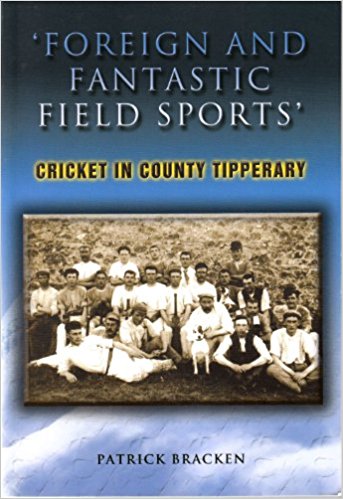
Liskeveen Books, 2004
ISBN 095465334X
Price: £12.00
In his account of 'foreign and fantastic field sports', and specifically cricket in County Tipperary, Patrick Bracken has gathered together information from sports reports which appeared in the local Tipperary press of the nineteenth and twentieth centuries. He chronicles the development, growth and decline of cricket in Tipperary.
Coexistent with this was the development of other sports and recreations, and an overview of some of these is also included. The foundation of the GAA and the associationsí ban on foreign sports features highly.
Sport did not take place in isolation and an outline of social life in Tipperary is also used to illustrate the political and social conditions of the times.
Review

The author, Littleton, Co. Tipperary native Patrick Bracken, has a first class honours degree in Local Studies from NUI Maynooth, and is presently undertaking a Masters degree in Information and Library Studies. He is employed by Tipperary Libraries and he works in their new Templemore branch library, Co. Tipperary where the launch took place.
The title for the book is taken from Archbishop Croke's letter to the United Ireland newspaper on his acceptance to become patron of the newly formed Gaelic Athletic Association. The impact of the GAA on the playing of cricket and the Archbishop's perception of what he deemed to be 'foreign' are commented upon. The implications of the GAA Ban receive attention as social and political events impinged on not alone sport, but on all aspects of society.
This important new research demonstrates how cricket developed in Tipperary in the mid-1830s and how it subsequently spread throughout the whole county during the second half of the nineteenth century. Its development was initially promoted and supported by the military forces at several barrack locations throughout the county and also the local landed gentry.
Primarily using contemporary Tipperary newspapers as his source material, the author has identified almost 260 cricket teams, which were once active in County Tipperary from 1834 and compiled these into an extensive database at locations ranging from Roscrea to Carrick-on-Suir, from Newport to Ballingarry.
This new study shows how there was cross community support for the game in the 1870s from Catholic to Protestant, landlord to tenant farmer, from soldier to merchant.
With location maps of teams the author shows how widespread the game became, with local hotspots in Clonmel, Cahir, Cashel, Tipperary, Nenagh, Thurles and Roscrea. Sport did not exist in isolation and the author recognises this by demonstrating the development of several other field sports in the county during the course of the book. Athletics, lawn tennis, archery, rugby football, soccer and golf all add to the heady mix of games which Tipperary men and women were playing. The exploits of some local personalities such as the Ryans of Rockwell; the D'Altons of Claremont; Harry Read, Roscrea; Dr Patrick Heffernan, Derrygrath; and Barclay Wilson are also documented.
The book concludes with an account of the only two remaining clubs now active in the county, Ballyeighan CC (with their playing facilities at the foot of Knockshegowna Hill) and Clonmel CC.
A comprehensive database of teams, map locations and a sixteen page plate section of photographs give a pioneering insight into the history of cricket in Tipperary, which will appeal not only to those interested in this game, but sports lovers and people with an interest in Tipperary history.
